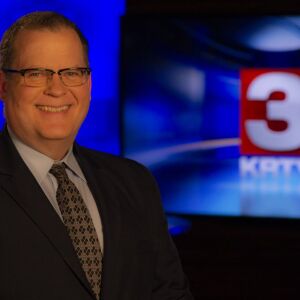CASCADE — The 2021 Harris Mountain Fire south of Cascade burned almost 32,000 acres.
Much of the damaged ground was part of the Sheep Creek Ranch.
Last year, MTN took you to the ranch to see how a Seattle based company was working with the landowner and other stakeholders to help bring the scorched earth back to life.
On Wednesday, MTN went back to the property for an update on the progress.
Colorful seedlings represent a sharp contrast from the blackened trunks that serve as a reminder to the fire.
“It was so hot that a lot of these areas were completely burnt. Everything's burnt and the soils are sanitized,” said Sheep Creek Ranch owner Don Harland.
Harland’s family has owned the Sheep Creek Ranch, one of the last natural corridors between Yellowstone and Glacier, for the past 53 years. The wildlife that roam this high country supplement the ranch’s primary outfitting business.
After the fire, the ranch teamed up with a company called Mast Reforestation.
“We're a vertically integrated reforestation company that reforests after catastrophic wildfires,” said Lisa Gonzalez-Kramer, the Vice President of Forest Carbon Development for Mast Reforestation.
“We've planted probably over a million or close to a million trees already, and we will plant probably another half a million to three quarters of a million next year,” said Harland.
Harland has also worked with Zachary Bashoor, founder, and CEO of Montana Forest Consultants, Incorporated on the project. Harland says it was Bashoor who introduced him to Mast.
“As our forester, he brought us into that fold and got everything kind of going for us,” said Harland. “He's been an integral part in this whole project. His company and his people following the planters and making sure our trees are planted, you know, the right way.”
Harland says Bashoor’s company has also done a lot of assessments on where the trees get planted and how they relate to the ecosystem.
Harland says the land in a nearby drainage that burned in the 1940’s is still trying to recover.
“That's 80 years. So, by us replanting we’ll jump it by probably 60 years and this habitat will come back. We have most of the species in Montana on this ranch,” said Harland.
Gonzalez-Kramer says reforesting after a fire presents a greater challenge than after a timber harvest.
“So, in the case of a post catastrophic environment, the landscape is totally scorched,” said Gonzalez-Kramer.” It's burned basically to the bare mineral soil. So, we've lost a lot of that organic layer with all the nutrients.”
Mast also sprayed weeds around the seedlings to keep competition for soil nutrients down.
Mast works with local consulting foresters in the Intermountain West with a mission of scaling reforestation to mitigate the worst effects of climate change. Sheep Creek represents their first project in Montana.
“We're reforesting Sheep Creek Ranch with about 2500 acres with native conifers, meaning Lodgepole Pine, Ponderosa Pine and Douglas Fir,” said Gonzalez-Kramer. “These are the species that were present here before the fire. And so we're restoring with those same climate adapted species.”
The fire did more than burn thousands of trees. It also disturbed the soil those trees depend on. Eroded soil is washed downstream. But restoration can revive the watershed.
“Here at the headwaters of the Missouri River, this is really important,” said Gonzalez-Kramer. “So, as the forest recovers, what it does is reduce the impact of those raindrops on the soil. It also holds a cooler site. So, snowpack stays longer and that water filters down into the soil and refreshes the aquifer in a slower pace.”
Logging the burned trees for lumber isn’t practical and Don’s not a fan of burning the downed piles because of the carbon that would be released. With the help of carbon credits, another option is available.
“They've come up with a new technology where they bury the logs for like 100 years and sequester that carbon in,” said Harland.
“That is also an activity that wouldn't have happened if we didn't enter into this space with the carbon market and are able to actually help pay for that by burying those logs,” said Gonzalez-Kramer.
In addition to the carbon credits, the project is being funded by a grant from the Farm Service Agency. Harland says he hopes to add more grants in the future.
It will be a long time before the area looks like it did before the fire. But taking steps now go a long way in restoring the land to what it once was.
“He's (Don) leaving this land for his children and grandchildren. These are really important fat, family, legacy values that Mass wants to support with Don,” said Gonzalez-Kramer.
“You can either cry about it or you can get in there and do your best to bring it back,” said Harland.




